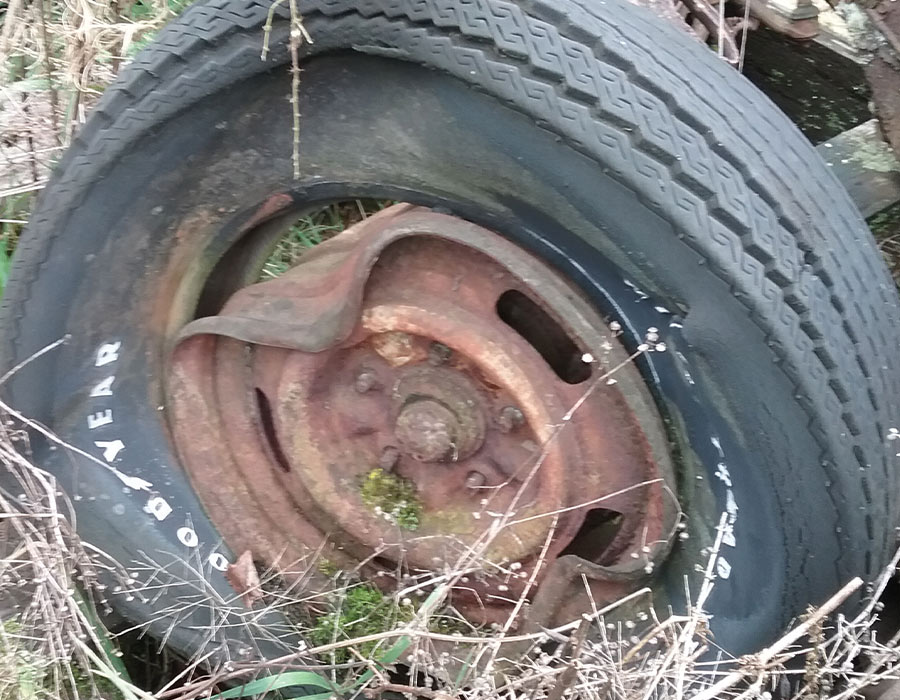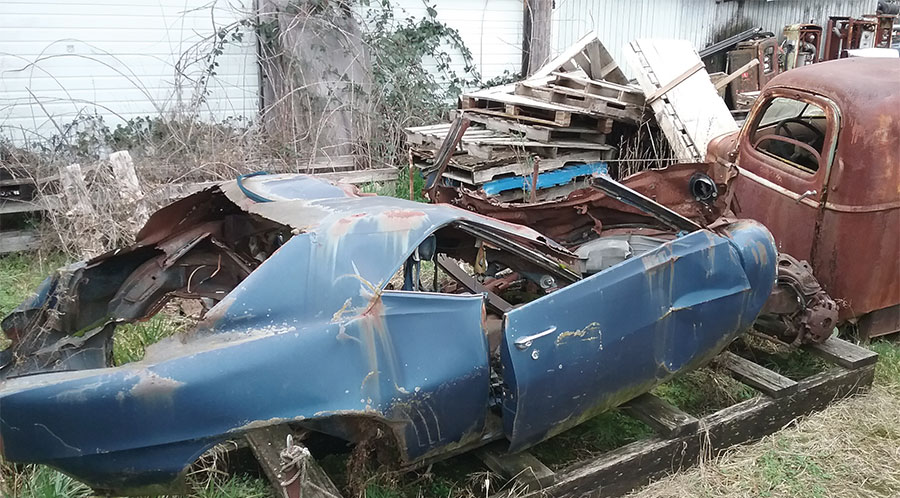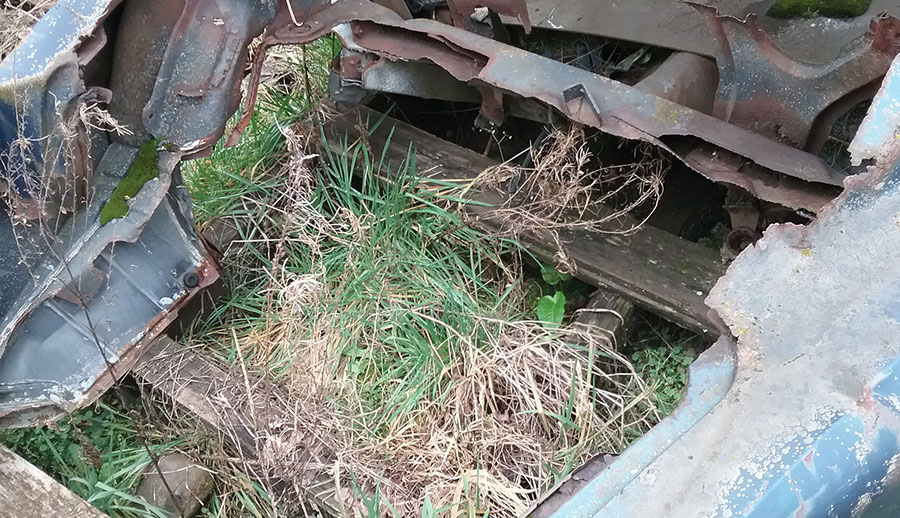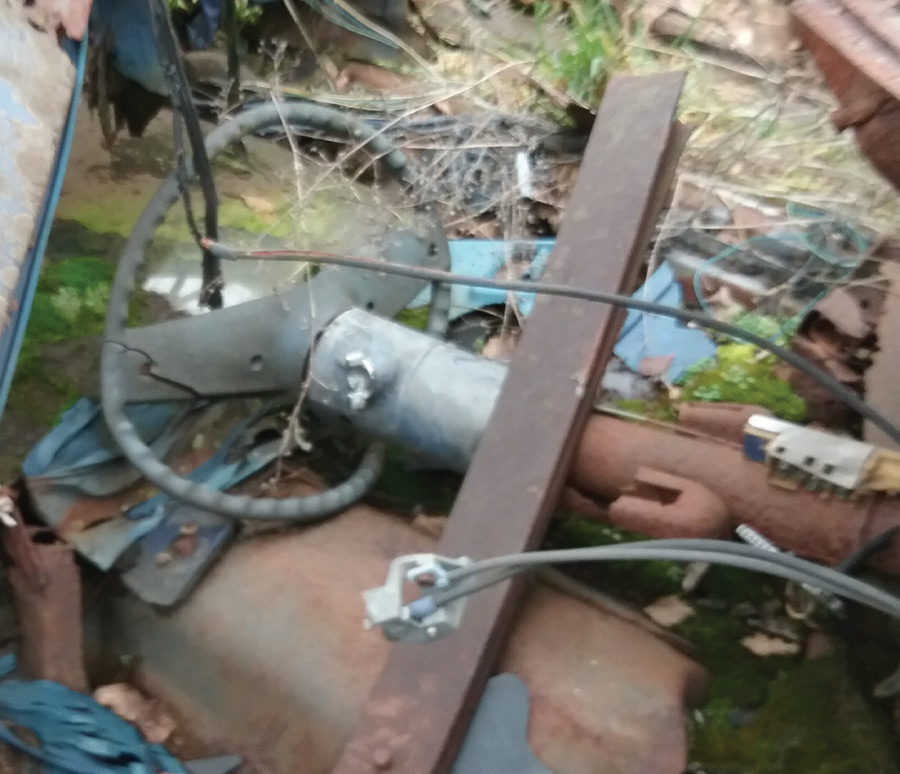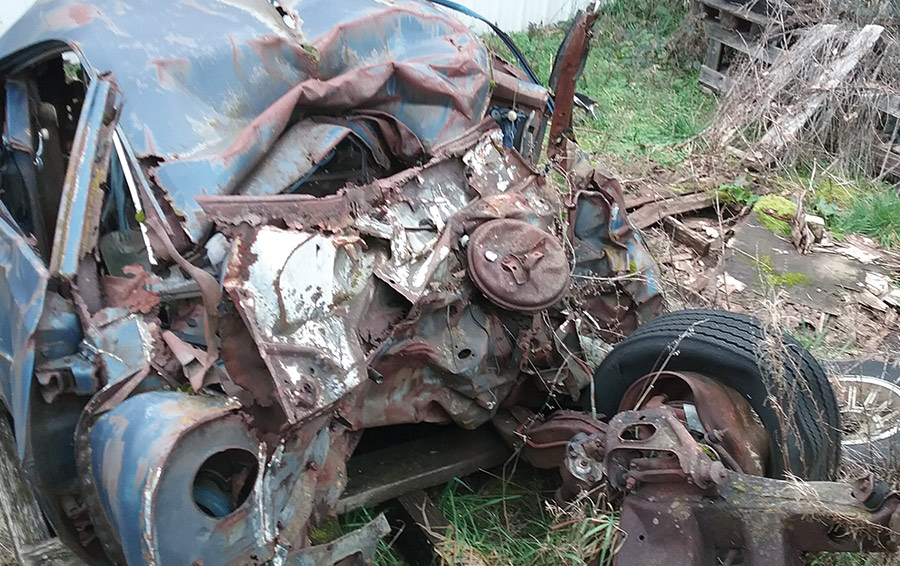 Bowtie Boneyard
Bowtie Boneyard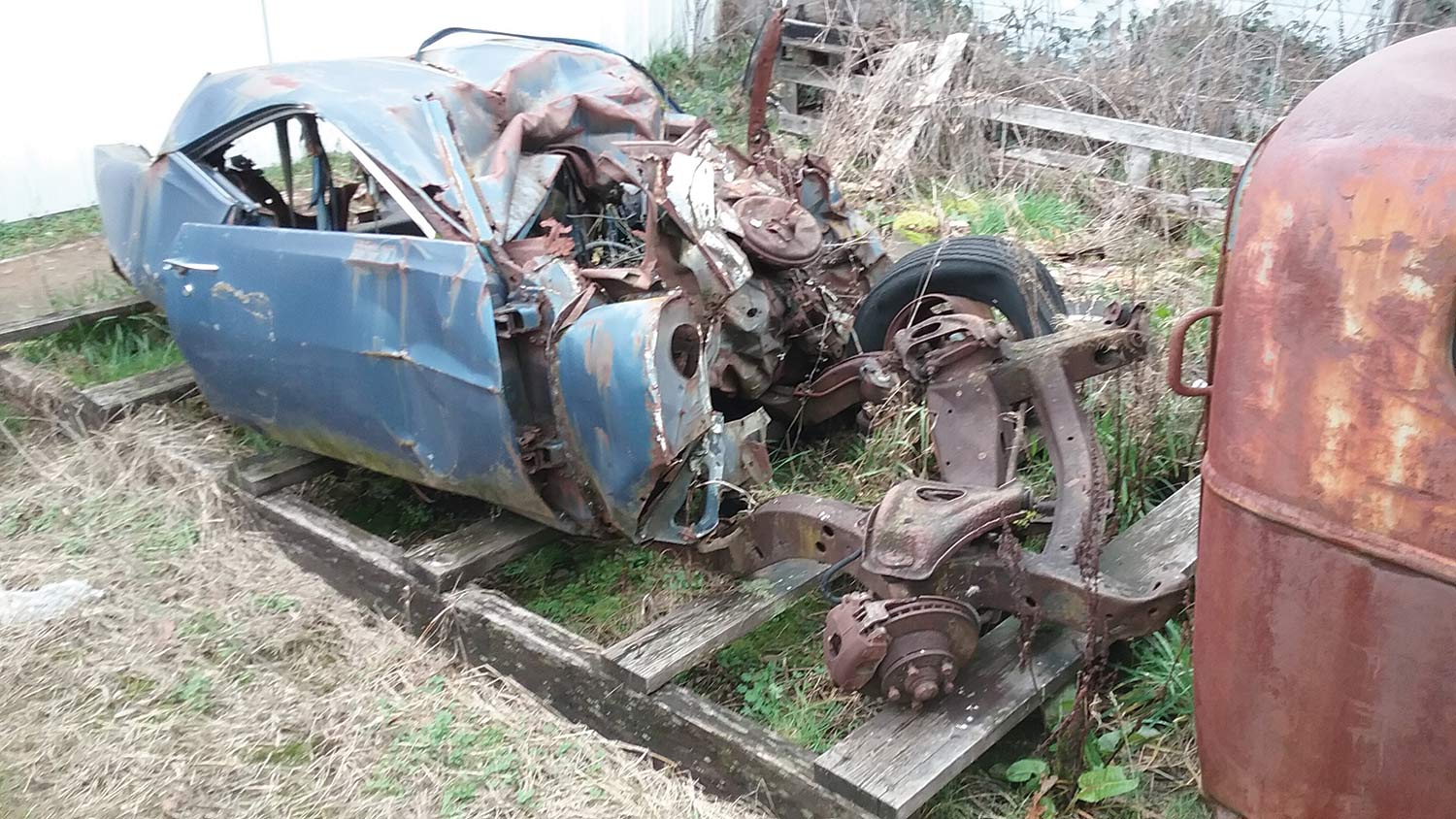
 TEXT & PHOTOS BY Steve Magnante
TEXT & PHOTOS BY Steve Magnanten 1969 Chevrolet built exactly 20,302 Z/28 Camaros. This is the sad fate of one of them. Discovered during a 2018 visit to Vancouver, Washington’s All American Classics auto parts yard (AAC, 800-955-4999), this LeMans Blue SCCA homologation special was just a year old and had under 5,000 miles on the odometer when it struck a concrete bridge abutment at speed.
When it was new in 1969, the muscle car boom was in its sixth year. Millions of “baby boomers” were getting their driver’s licenses and the insurance industry was beginning to see what happens when teenage drivers are given cars with 300 and 400 hp. And even though the Z/28’s 302 was factory-rated at a seemingly mundane 290 hp, the reality was closer to 350 with mild tuning. What’s more, every 1969 Z/28 came equipped with a four-speed manual transmission. As any seasoned stick jockey knows, banging gears and power shifting go with the territory—as do exaggerated fish tails and power slides. By contrast, automatics are more civilized.
By 1971, the insurance industry began to push back. Armed with over a half decade’s worth of accident reports, it was becoming clear that high-powered cars and young drivers resulted in collisions—and financial losses for the insurance giants. Measures were quickly put in place to even the odds. Most painfully, insurance companies added stiff surcharges for muscle cars, and four-speed transmissions were targeted for an extra fee.
The 1972 inclusion of an engine identification digit in GM VIN tags wasn’t a favor for future collectors and restorers. Rather, it was a sure way for insurers to know how big your engine was so they could bill you accordingly against losses. The days of 123 (six-cylinder)/124 (V-8) Camaro VIN shell games were over.
Getting back to the mangled Z/28 featured here, the fact that it was destroyed in a single vehicle collision suggests that excessive speed was part of the picture. We don’t know the driver’s identity, but more than likely a single male under age 30 was at the wheel when it hit the bridge. Let’s explore deeper …
